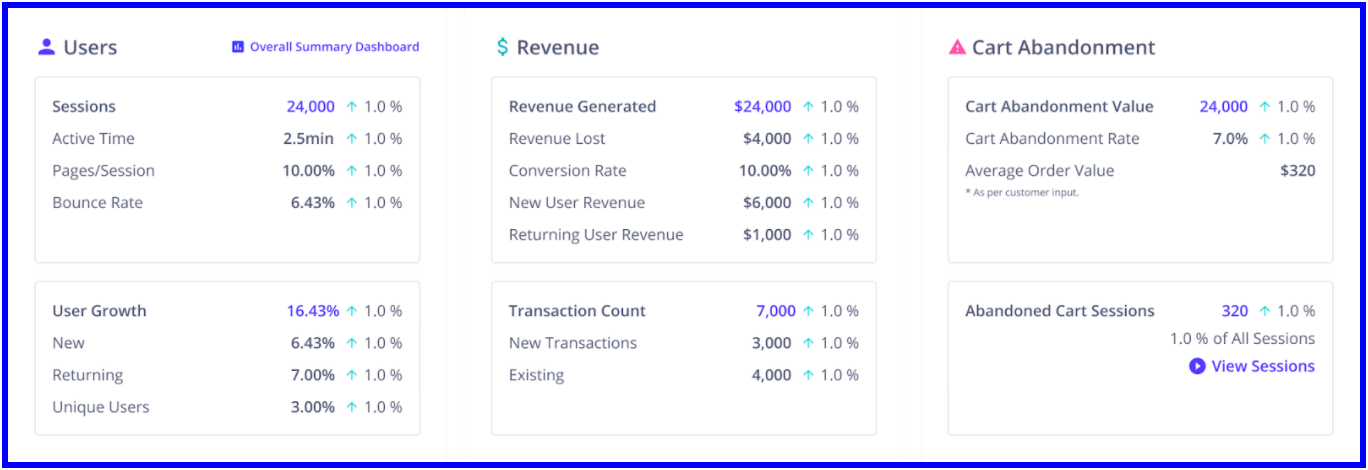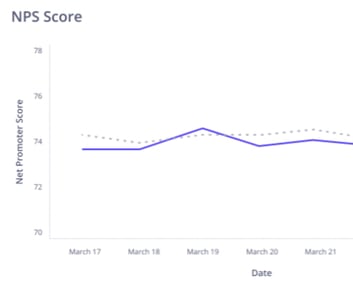Why CX Initiatives Fail & Why You Need A CX Mission Control Center
.png?width=2400&name=auryc-blog-featured-image-customer_experience_initiative_fail-need_cx_mission_control_center%20(1).png)
“93% of Customer Experience Initiatives are Failing”
This statement was made 5 years ago by Bob Thomson after reviewing multiple data sources, including this Gartner data. So why are we bringing up a 5-year old article? Because judging by the recent trending talk tracks about the ROI of CX, including Accenture’s recent research that states that 30% of CEOs de-prioritized CX Initiatives because of lack of clarity into the bottom-line impact of these actions, we still see a majority of CX initiatives fail over time.
Why do CX Initiatives Fail?
The reasons have been outlined by dozens of other outlets (and the subject of an upcoming series where we dive deeper into each reason and how to fix them). Just do a google search for “Why do CX Initiative Fail” and you will see over 2 Million results.
To save you time, here are the broader categories of why they fail:- Misalignment (both in metrics and between teams)
- Lack of Bottom Line Impact Clarity
- No Clear Plan/Process
- Poor Consistency in Measurement
- Poor/Siloed Customer Data
While not every CX Initiative fails because of all of the above, I will guarantee you that the majority have failed for at least (3) of the (5) issues listed above. Communication and Clarity undertone all of these issues.
Question:
So how do you keep Clarity and Communication flowing throughout the long duration of your CX Initiatives?
Answer:
By making sure that information is readily and easily available and presented in a common “language” that everyone understands.
Enter the CX Mission Control Dashboard
While it is not an instant fix, it will make Communication easier and give instant Clarity to the performance and status of your CX initiatives. Plus, it won’t have to be recalculated for different levels of seniority (especially the C-Suite). The information on your CX Control Center relates to bottom-line impact and allows for multiple departments to view, analyze, address, and optimize any issues that surface. Everyone will be starting from the same data set that no single department owns, but that everyone is responsible for affecting.
What is a CX Mission Control Dashboard?
We aren’t talking about a huge room with desks and monitors with a large set of screens at the front. These types of “Mission Control Centers,” while necessary for larger brands, are resource-intensive and we’re focusing on the good ‘ol dashboard here... Or, to be more precise, a few dashboards that give you “at-a-glance” reporting and the ability to dive deeper into any issues and anomalies that arise.
 Example CX Mission Control Dashboard (Auryc’s Executive Insight Dashboard)
Example CX Mission Control Dashboard (Auryc’s Executive Insight Dashboard)
These Mission Control Dashboards operate on the premise of tying all CX activities and metrics to bottom-line performance and revenue. After all, these dashboards are meant to maintain alignment across departments and seniority, spark conversations, and measure the impact over time of CX Initiatives. To keep these dashboards clean and avoid the problem of “analysis paralysis”, the information presented must convey a story rooted in what we call “Vital Metrics”, which include:
User Metrics
- Total Customers (trending)
- New vs Returning Customers
- Overall Sessions
- Geographic information (if relevant)
Performance Metrics
- Revenue Trends
- Conversion Trends
- Overall Cart Values
- Cart Abandonment Rates
- Path Analysis
Voice of Customer Metrics
- NPS Trending (including Promoter and Detractor data)
- Star Ratings
- Total Negative/Positive Feedback
- Sentiment Analysis with Topic Clusters
Site/App Diagnostic Metrics
- Top Session Errors (prioritized by revenue impact)
- Total revenue impacted due to site/app friction
- Core Web Vitals
At a minimum, any good CX Mission Control Dashboard should contain these pieces of information. You can also include customer support ticket volume, time-to-resolution, key issues from support, etc.
Why is there a need for a CX Mission Control Center?
The idea for the CX Mission Control center leans into the K.I.S.S. model (ie, Keep It Simple "Simon"), however, it’s also about making sure there is enough data that is actionable and keeps the key focus on the revenue and profitability of the business.
If everyone is “speaking the same language” (ie, performance and revenue impact), then communications are streamlined and words like “hope” and “assume” disappear from the conversation. Everyone's insights and hypothesis stem directly from data with full context.
The KPIs are democratized across your organization and become a guiding principle to making sure that you stay focused on the customer (after all, these CX metrics are customer-centric by definition), while also making sure that the company grows in a healthy way.
In addition, the mission control center should allow for diving deeper into key areas of friction to investigate what causes them so that teams stay dedicated to discussions with examples and not general statements.
 Example: if there is a recent dip in your NPS, you should be able to see not only which customers were affected and how many, but what caused the dip by looking at session data, error reports, feedback, and even session replays to understand the complexity of the issue.
Example: if there is a recent dip in your NPS, you should be able to see not only which customers were affected and how many, but what caused the dip by looking at session data, error reports, feedback, and even session replays to understand the complexity of the issue.
Why aren’t more organizations using CX Mission Control Centers?
The reason is straightforward for anyone who has had the responsibility to set up/build dashboards...it’s hard. Why is it so hard?
- Siloed data that needs to be connected (and often isn’t)
- Lack of Buy-in for Resources
- Accountability/responsibility for the build and upkeep
- Lack of depth into the data
In reality, it takes commitment and a plan (and, if you are lucky, a project/cx manager). But don't let that scare you off. After all, CX initiatives require work... a lot of it. But, the rewards are worth it. (Read this article to learn how you can uncover Millions of Dollars in missed revenue and how to fix it.)
What can you do to create your own CX Mission Control Center?
Start with internal alignment about why you are doing any CX Initiative, gather the right stakeholders, agree on the metrics/growth, and then simply start with a spreadsheet that is accessible and able to be updated regularly. And then have regular calls where you discuss these. Also, it will help if every department involved has a key owner who looks at and updates the data regularly.
...that is the manual way. This is not THE way...
The better way:
The better way: implement a platform that highlights the performance of your CX initiatives. Not only will it give you a fast time-to-value, it will also keep you focused on what you do best (which usually isn't making dashboards). The dashboard must be ready out of the box and have the relevant vital metrics that will continue to drive interest and attention to key issues affecting your customer experience.
Auryc’s Customer Experience Intelligence Platform provides an out-of-the-box CX Dashboard that is powered by full behavior data capture, high-fidelity session replay, AI-powered customer feedback, and powerful predictive insights to deliver actionable insights into every friction point in your customer experience. The dashboard is only a small indication of the full power of the Auryc CX Intelligence Engine.
Avoid CX initiative failure...
Request a Demo of Auryc today
With this much insight available in just our new executive insight dashboard, it's no wonder why thousands of CX-obsessed professionals have happily made the switch to Auryc's Customer Experience Intelligence Platform.If you are interested in learning more about Auryc, our CX Mission Control Dashboard, or how you’ll uncover the true bottom-line impact of your customer’s frustrations with your site or app:

